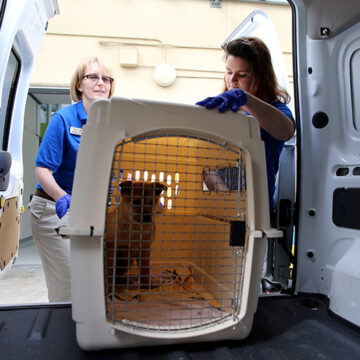Introduction
Cats, known for their independent nature, can sometimes surprise us with their willingness to explore the world beyond the confines of our homes. Cat owners often find themselves wondering about safe and effective ways to introduce their feline friends to the great outdoors. This is where a cat harness comes into play. A cat harness is a valuable tool that not only provides a safe and controlled means of letting your cat venture outside but also aids in training them to adapt to new environments.
In this guide, we will delve into the art of using a cat harness for training purposes, ensuring a smooth and positive experience for both you and your curious companion.
- Why Choose a Cat Harness for Training?
When it comes to allowing your cat to experience the outdoors, safety is paramount. A cat harness offers several advantages over the traditional collar. Unlike a collar, which can easily slip off or put pressure on the delicate neck, a cat harness distributes pressure more evenly across the cat’s body, reducing the risk of injury or escape. It provides better control, making it less likely for your cat to wriggle out of it. Additionally, a harness allows you to attach a leash, giving you the ability to guide and teach your cat appropriate behavior during outdoor excursions.
- Choosing the Right Cat Harness
Selecting and buying the appropriate cat harnesses online or offline is a crucial step in ensuring a successful training experience. There are various types of harnesses available, including vest-style, H-style, and figure-eight designs. Look for a harness that fits snugly but is not too tight, allowing your cat to move comfortably. Avoid harnesses with thin straps that could dig into your cat’s skin.
- Getting Your Cat Acclimated
Before venturing outside, it’s essential to get your cat accustomed to the harness indoors. Cats can be wary of new sensations, so it’s recommended to introduce the harness gradually. Place the harness near your cat’s resting spots, allowing them to investigate it at their own pace. Once your cat seems comfortable with the harness’s presence, gently place it on their body for short periods. Reward them with treats and praise to create positive associations.
- Putting on the Cat Harness
Putting on a cat harness correctly requires patience and a gentle approach. Here’s a step-by-step guide:
Preparation: Ensure your cat is calm and relaxed before attempting to put on the harness. Have treats on hand to reward them for cooperation.
Positioning: Hold the harness open and gently guide your cat’s front legs through the corresponding openings. The harness should rest comfortably on their shoulders and back.
Adjustment: Fasten the harness securely but not too tightly. You should be able to slide a finger between the harness and your cat’s skin. Adjust the straps for a snug fit.
Leash Attachment: Most harnesses have a metal ring or loop where you can attach the leash. Make sure the attachment is secure before moving forward.
- Indoor Exploration
Before heading outside, allow your cat to explore indoors while wearing the harness. This helps them become accustomed to the sensation and movement restriction. Engage your cat in play and activities they enjoy to create positive associations with the harness.
- Outdoor Adventures
When you feel your cat is comfortable with the harness indoors, it’s time for their first outdoor adventure. Choose a quiet and secure location, ideally in your backyard or a low-traffic area. Begin by allowing your cat to explore at their own pace. Hold the leash loosely and let them lead, but be prepared to guide them away from potential hazards.
- Positive Reinforcement
During outdoor training sessions, use positive reinforcement to encourage desired behaviors. Reward your cat for staying close, walking calmly, and not trying to escape the harness. Treats, praise, and gentle pets are effective ways to reinforce their good behavior.
- Patience and Gradual Progress
Remember that every cat is unique, and the pace of training will vary. Some cats may take to the harness quickly, while others might need more time to adjust. Be patient and celebrate even small victories. If your cat shows signs of discomfort or stress, take a step back and give them time before attempting another outdoor session.
Conclusion
Buying a cat harness online or offline and using it for training can be a rewarding endeavor that enhances your cat’s life and strengthens the bond between you. By choosing the right harness, acclimating your cat gradually, and practicing positive reinforcement, you can guide your feline friend into becoming a confident and well-behaved outdoor explorer. Whether it’s strolling through the garden or enjoying a leisurely walk, the cat harness opens up a world of possibilities for both you and your beloved pet.
















